Adenosine: a neuron-glial transmitter promoting myelination in the CNS in response to action potentials
- PMID: 12467589
- PMCID: PMC1201407
- DOI: 10.1016/s0896-6273(02)01067-x
Adenosine: a neuron-glial transmitter promoting myelination in the CNS in response to action potentials
Abstract
Neuronal activity influences myelination of the brain, but the molecular mechanisms involved are largely unknown. Here, we report that oligodendrocyte progenitor cells (OPCs) express functional adenosine receptors, which are activated in response to action potential firing. Adenosine acts as a potent neuron-glial transmitter to inhibit OPC proliferation, stimulate differentiation, and promote the formation of myelin. This neuron-glial signal provides a molecular mechanism for promoting oligodendrocyte development and myelination in response to impulse activity and may help resolve controversy on the opposite effects of impulse activity on myelination in the central and peripheral nervous systems.
Figures

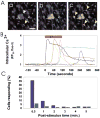
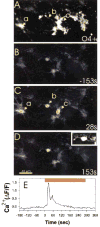
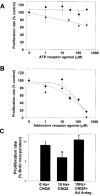
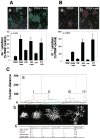


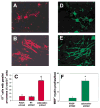
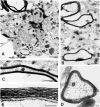

Similar articles
-
Nerve impulses regulate myelination through purinergic signalling.Novartis Found Symp. 2006;276:148-58; discussion 158-61, 233-7, 275-81. Novartis Found Symp. 2006. PMID: 16805428 Review.
-
Sox2 Is Essential for Oligodendroglial Proliferation and Differentiation during Postnatal Brain Myelination and CNS Remyelination.J Neurosci. 2018 Feb 14;38(7):1802-1820. doi: 10.1523/JNEUROSCI.1291-17.2018. Epub 2018 Jan 15. J Neurosci. 2018. PMID: 29335358 Free PMC article.
-
Astrocytes promote myelination in response to electrical impulses.Neuron. 2006 Mar 16;49(6):823-32. doi: 10.1016/j.neuron.2006.02.006. Neuron. 2006. PMID: 16543131 Free PMC article.
-
Adenosine A2B receptors differently modulate oligodendrogliogenesis and myelination depending on their cellular localization.Glia. 2024 Nov;72(11):1985-2000. doi: 10.1002/glia.24593. Epub 2024 Jul 30. Glia. 2024. PMID: 39077799
-
Calcium Signaling in the Oligodendrocyte Lineage: Regulators and Consequences.Annu Rev Neurosci. 2020 Jul 8;43:163-186. doi: 10.1146/annurev-neuro-100719-093305. Epub 2020 Feb 19. Annu Rev Neurosci. 2020. PMID: 32075518 Review.
Cited by
-
Glial processes at the Drosophila larval neuromuscular junction match synaptic growth.PLoS One. 2012;7(5):e37876. doi: 10.1371/journal.pone.0037876. Epub 2012 May 29. PLoS One. 2012. PMID: 22666403 Free PMC article.
-
Oligodendroglial expression of TrkB independently regulates myelination and progenitor cell proliferation.J Neurosci. 2013 Mar 13;33(11):4947-57. doi: 10.1523/JNEUROSCI.3990-12.2013. J Neurosci. 2013. PMID: 23486965 Free PMC article.
-
The axon-glia unit in white matter stroke: mechanisms of damage and recovery.Brain Res. 2015 Oct 14;1623:123-34. doi: 10.1016/j.brainres.2015.02.019. Epub 2015 Feb 20. Brain Res. 2015. PMID: 25704204 Free PMC article. Review.
-
GDE2 expression in oligodendroglia regulates the pace of oligodendrocyte maturation.Dev Dyn. 2021 Apr;250(4):513-526. doi: 10.1002/dvdy.265. Epub 2020 Nov 2. Dev Dyn. 2021. PMID: 33095500 Free PMC article.
-
Increased Sleep Depth in Developing Neural Networks: New Insights from Sleep Restriction in Children.Front Hum Neurosci. 2016 Sep 21;10:456. doi: 10.3389/fnhum.2016.00456. eCollection 2016. Front Hum Neurosci. 2016. PMID: 27708567 Free PMC article.
References
-
- Barres BA, Raff MC. Proliferation of oligodendrocyte precursor cells depends on electrical activity in axons. Nature. 1993;361:258–260. - PubMed
-
- Barres BA, Lazar MA, Raff MC. A novel role for thyroid hormone, glucocorticoids and retinoic acid in timing oligodendrocyte development. Development. 1994;120:1097–1108. - PubMed
-
- Baumann N, Pham-Dinh D. Biology of oligodendrocyte and myelin in the mammalian central nervous system. Physiol Rev. 2001;81:871–927. - PubMed
MeSH terms
Substances
Grants and funding
LinkOut - more resources
Full Text Sources
Other Literature Sources

